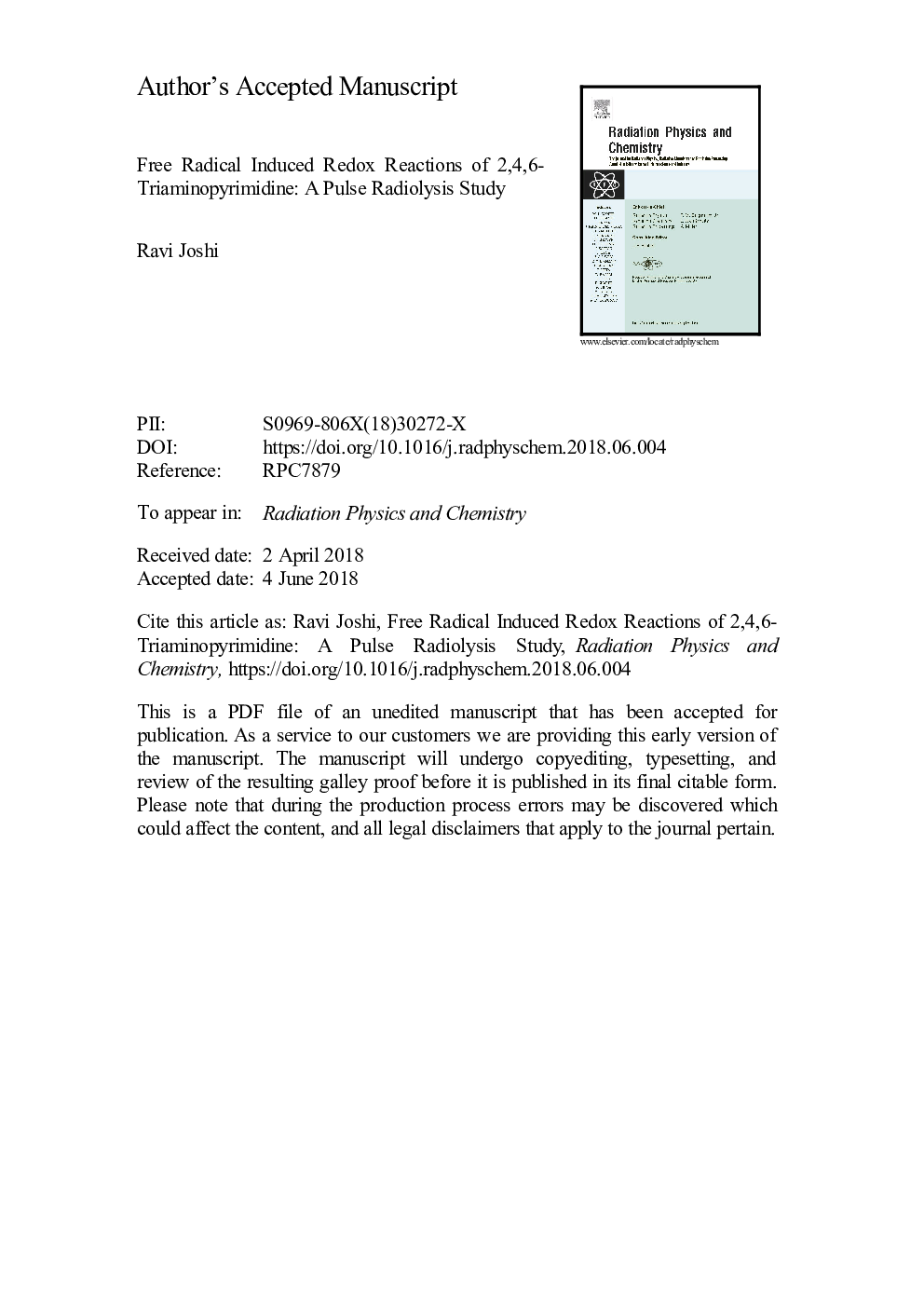| Article ID | Journal | Published Year | Pages | File Type |
|---|---|---|---|---|
| 8251240 | Radiation Physics and Chemistry | 2018 | 25 Pages |
Abstract
Kinetics and mechanism of reactions of 2,4,6-triaminopyrimidine (TAP) with some free radicals have been studied using pulse radiolysis technique. TAP has been found to react with hydrated electron (3.1â¯Ã 108 Mâ1 sâ1), hydroxyl radical (4.0â¯Ã 109 Mâ1 sâ1), trichloromethyl peroxyl radical (1.1â¯Ã 108 Mâ1 sâ1), and sulfate radical (4.5â¯Ã 109 Mâ1 sâ1). Density functional calculations have been performed to assign absorption maxima of transients produced on oxidation of TAP as: TAP
- + radical cation (~ 430, ~ 600, ~ 720â¯nm), TAP(C5)
- radical (~ 300, ~ 320â¯nm), aminyl TAP(NH)
- radical (~ 300, ~ 340, ~ 440 and ~ 520â¯nm) and TAP-OH
- radical adduct (640â¯nm). Almost 72% of TAP transients produced with hydroxyl radical have been found to be oxidizing in nature, which react with tyrosine (8.0â¯Ã 107 Mâ1 sâ1), glutathione (1.2â¯Ã 108 Mâ1 sâ1) and bovine serum albumin protein (7.8â¯Ã 108 Mâ1 sâ1).
- + radical cation (~ 430, ~ 600, ~ 720â¯nm), TAP(C5)
- radical (~ 300, ~ 320â¯nm), aminyl TAP(NH)
- radical (~ 300, ~ 340, ~ 440 and ~ 520â¯nm) and TAP-OH
- radical adduct (640â¯nm). Almost 72% of TAP transients produced with hydroxyl radical have been found to be oxidizing in nature, which react with tyrosine (8.0â¯Ã 107 Mâ1 sâ1), glutathione (1.2â¯Ã 108 Mâ1 sâ1) and bovine serum albumin protein (7.8â¯Ã 108 Mâ1 sâ1).
Related Topics
Physical Sciences and Engineering
Physics and Astronomy
Radiation
Authors
Ravi Joshi,
